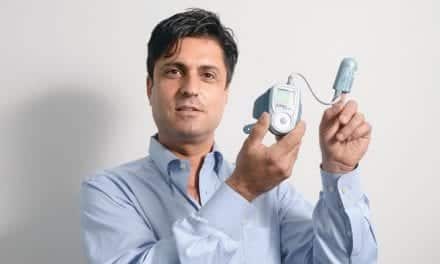Compared to many other specialties and subspecialties, sleep medicine is in its youth. To mature into a well-rounded adult, better and more open communication with other medical specialties is needed. Sleep medicine may be misunderstood by other specialists because it doesn’t revolve around a specific organ, such as a liver or a heart, that may be easier to pinpoint. But sleep affects every organ of the body, as research increasingly shows.
In a phone interview with National Sleep Foundation chairman Dr Charles Czeisler, he said sleep medicine will need to evolve over time, just as older specialties have. His recommendations include outreach, specifically to primary care physicians and to other specialists. “We’re not providing the penetrance that is necessary to really achieve success in terms of diagnosing the larger population who has sleep disorders. In order to achieve that penetrance, there have to be some changes,” Czeisler told me. Home sleep testing (HST), he says, is a way to achieve a much higher rate of testing. We explore that idea in-depth, suggesting four specific specialties that are ideal targets for HST outreach.
September 2014 cover story physician Dr Lee Surkin speaks enthusiastically about open communication between specialties. He also lives it in his practice each day. His triple board certification in sleep medicine, cardiovascular disease, and nuclear cardiology gives him a unique perspective in how multiple specialties interrelate.
One challenge to be overcome, Surkin explained to me, is the misconception that better communication with other physicians will take an inordinate amount of time. Healthcare professionals are already extremely busy, and adding more work or responsibility isn’t exactly appealing. But, speaking from experience, Surkin says, “It’s pretty easy and efficient to ask a few questions and use a screening questionnaire with your patients.” He suggests the questionnaire be administered by a medical assistant and reviewed by the physician. “And if the clinical screening is suggestive of significant risk, then the office needs to pick up the phone and make the referral,” he says.
Ideally, the referrals will become bidirectional. “Just as the cardiac patient is at high risk of a sleep disorder, so too is the sleep disorder patient at high risk for a cardiovascular disease,” Surkin says. And that logic applies to many other specialties as well, from endocrinology to dentistry, psychiatry, pediatrics, oncology, and many more.
The first steps are up to individual sleep professionals. Surkin says, “Sleep physicians can work with me through the American Academy of Cardiovascular Sleep Medicine to network with other healthcare providers or on their own in their own communities to meet with fellow physician cardiologists and engage in conversation. They can find common ground to work together synergistically for the greater good of the patient. That’s something I have done in my community and something I do in my practice.”
Sree Roy is editor of Sleep Review. CONTACT [email protected]




